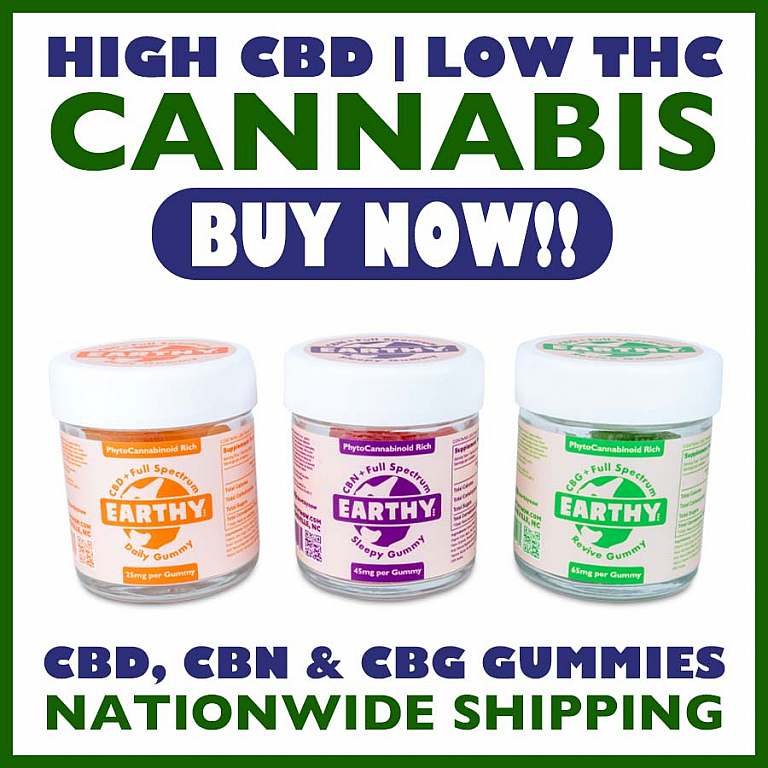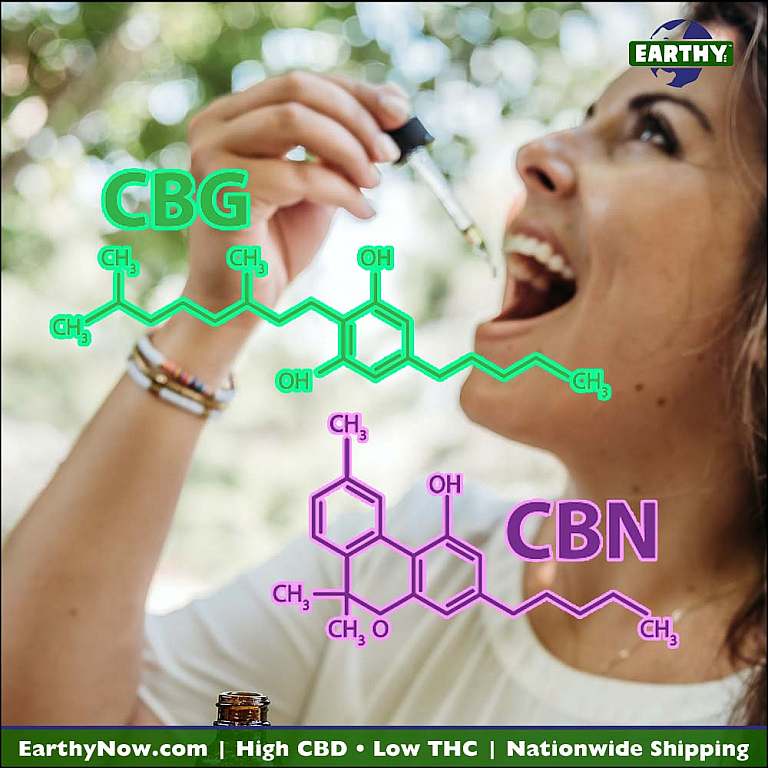CBG and CBN explained
Are you familiar with CBD (cannabidiol)? Its popularity is growing exponentially. CBD is available almost everywhere and people are finding the powerful natural substance from cannabis to be extremely beneficial. This is achieved without the intoxicating effects of marijuana. CBD is a cannabinoid, which just means it is a substance from the cannabis plant.
There are hundreds more cannabis compounds with related chemical structure to learn about. Today we will look at two of the top 10 common cannabinoids. Both CBG and CBN are different cannabinoids that go hand in hand with CBD use. More research on these other cannabinoids will tell us exactly what the benefits are. Anecdotal reporting on cannabis plants shows myriad potential benefits and love for these cannabinoids.
What is CBG?
Cannabigerol (CBG) is a non-psychoactive cannabinoid found in trace amounts in harvested and processed cannabis. Cannabigerolic acid (CBGa) is the precursor of CBG, and is responsible for creating most downstream synthesized cannabinoids like CBD [1]. Because of this CBG is lovingly called the “mother of all cannabinoids,” but since most of the CBGa is converted into cannabinoids, traditionally there was very little left in the plant upon harvest to use.
In 2019, genetically-created CBG-specific strains were planted for the first time, ushering in new economical methods for harvesting this invaluable cannabinoid. A 2018 study indicated that CBG is a regulator of endocannabinoid signaling [2], so it may have a small part to play in much of human physiology.
What is CBN?
Cannabinol (CBN) is a cannabinoid found in low concentration in the cannabis plant and is mainly a product of the aging of tetrahydrocannabinol acid (THCa). When cannabis is aged, THCa in the plant converts to cannabolic acid (CBNa), and when decarboxylated by air, heat or light, converts to CBN.
CBN is sometimes considered to have mood-altering effects, with far less potency compared to Delta-9 THC [3].
Endocannabinoid system
The human endocannabinoid system (ECS) was discovered in the 1990s and science indicates it is involved in regulating physiological and cognitive processes, immune system activities, appetite, pain-sensation, and much more [5]. We have ECS cannabinoid receptors throughout our bodies, built to use cannabinoids from plants, and endocannabinoids which are made by the body.
Are CBG and CBN legal?
CBG and CBN are federally legal along with CBD, under the 2014 and 2018 Farm Bills. The two pieces of federal legislation helped bring the hemp plant back into the limelight.
The 2014 Farm Bill removed industrial hemp from the list of Schedule 1 substances and was the seed of hemp’s resurgence. The Bill made it federally legal and allowed long-forbidden research into hemp-derived cannabinoids to begin in earnest. The 2018 Farm Bill expanded on this, making it clear to legal experts that all other plant materials and substances derived from legally-defined hemp are also federally-compliant [11].
The Farm Bill defines hemp as “Hemp.–The term `hemp’ means the plant Cannabis sativa L. and any part of that plant, including the seeds thereof and all derivatives, extracts, cannabinoids, isomers, acids, salts, and salts of isomers, whether growing or not, with a delta-9 tetrahydrocannabinol concentration of not more than 0.3 percent on a dry weight basis.”
Good news, since CBG and CBN fall under these guidelines, they are also federally compliant. It’s always good to look for a product’s certificate of analysis (COA) before purchasing. A COA is a document that shows details about a product when it is lab tested for purity and ingredients.
How can you consume CBG and CBN?
There are many ways to use these cannabinoids. To start, similar to CBD flower, the top 5 strains with CBG can be used like traditional cannabis—smoked in a joint or bowl, vaporized, made into butter, etc.
One great method for convenience is eating gummies. Earthy Now’s Full Spectrum CBG Revive Gummies are caffeine free and made with all natural ingredients and premium CBG isolate.
There’s a CBN option too! Earthy Now’s Full Spectrum Sleepy CBN Gummies are crafted with all natural ingredients and premium CBN isolate.
Learn more in How to Use CBN Oil: A Beginner’s Guide and How to Use CBN Gummies for Optimal Benefit
CBG in topical products
The power of hemp plants doesn’t stop with consumable cannabis compounds. With cannabinoid receptors so common in the body, the potential for CBG is great and it is combined with other cannabinoids in fine topical skin products.
Is there a drug test for CBG and CBN?
Not exactly, but there is a risk of failing a drug test. It depends on the type of cannabinoid product one is using. Drug tests for marijuana generally identify THC or its metabolites. Although tests do not screen for other cannabinoids, full spectrum hemp products contain low quantities of THC that can make a person fail a drug test.
What does full spectrum mean?
Full spectrum CBD contains CBD and small amounts of hundreds of other beneficial cannabinoids, including THC. THC is the main psychoactive component of the cannabis plant—the part that can make people feel high. CBG and CBN is sometimes combined with full spectrum CBD in products. Full spectrum CBD can have up to .3% of Delta-9 THC and still be federally-compliant.
CBG and CBN parting thoughts
While researchers test the potential medical benefits of CBN and CBG, find out for yourself if they are the right cannabinoids for you. Earthy Now has premium CBD, CBG and CBN products available for nationwide shipping.
Disclaimer – Information is provided for educational purposes. It does not, and is not intended to, constitute legal advice or medical advice. We attempt to be accurate and up to date but the legality of cannabinoids and the science of cannabis is evolving. The author is neither a lawyer or a legal expert, nor a doctor or medical expert. You should check with your local authorities and medical providers before buying or using any products.
References
- https://www.openaccessgovernment.org/cbg-the-mother-of-all-cannabinoids-with-broad-antibacterial-activity/95824/
- https://www.analyticalcannabis.com/articles/cbg-vs-cbd-what-are-the-differences-312232
- https://www.sciencedirect.com/science/article/abs/pii/S1054358917300273
- https://www.healthline.com/health/cbd-vs-cbn#cbn-benefits-uses
- https://www.ncbi.nlm.nih.gov/pmc/articles/PMC2931553/






